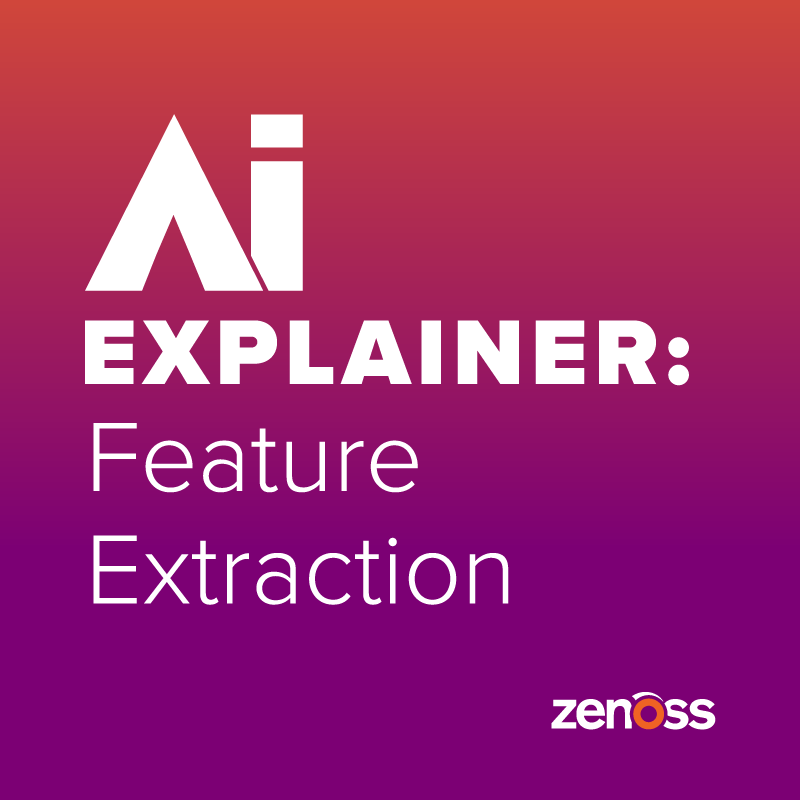In a previous blog post, which was a glossary of terms related to artificial intelligence, I included this brief definition of "feature extraction":
Feature Extraction: Selecting or creating relevant attributes (features) from data to improve the performance of machine learning models.
Let’s go a bit deeper on that. In the ever-expanding landscape of machine learning, feature extraction stands out as a crucial technique for enhancing the performance of models and uncovering valuable insights from complex datasets. This process, rooted in the principles of data preprocessing and feature engineering, plays a pivotal role in transforming raw data into meaningful representations that facilitate accurate predictions and decision-making.
I wrote a previous blog post about data preprocessing, but now I just introduced the term “feature engineering.” The difference between data preprocessing and feature engineering you ask? Here’s the difference:
- Data Preprocessing: Data preprocessing involves preparing the raw data for analysis or modeling. It focuses on cleaning, transforming and formatting the data to make it suitable for machine learning algorithms. Data preprocessing steps may include handling missing values, scaling or normalizing features, encoding categorical variables, and splitting the data into training and testing sets. Essentially, data preprocessing is about getting the data into a usable format for analysis or modeling.
- Feature Engineering: Feature engineering, on the other hand, is a subset of data preprocessing. It specifically focuses on selecting, transforming or creating new features from the existing data to improve the performance of machine learning models. Feature engineering goes beyond basic data cleaning and formatting; it involves extracting insights from the data, identifying relevant features, and creating new representations that enhance the model's predictive power. Feature engineering aims to enrich the dataset with informative attributes that better capture the underlying patterns and relationships, ultimately leading to more accurate and robust models.
Back to feature extraction — let's delve into its origins, its necessity, and some illuminating examples of its application.
The Genesis of Feature Extraction
The concept of feature extraction emerged as a response to the inherent challenges posed by raw data in machine learning tasks. In early machine learning endeavors, researchers and practitioners quickly realized that not all data attributes are created equal. Some features may be redundant, irrelevant or noisy, leading to suboptimal model performance and diminished interpretability. Feature extraction arose as a solution to this conundrum, aiming to distill relevant information from the data while discarding extraneous noise.
The Necessity and Value of Feature Extraction
Feature extraction is necessary for several reasons. First, it helps simplify complex datasets by reducing dimensionality and focusing on the most informative attributes. By selecting or creating relevant features, feature extraction enables models to capture essential patterns and relationships within the data more effectively. Additionally, feature extraction enhances model interpretability, allowing stakeholders to gain deeper insights into the underlying factors driving predictions or classifications. Moreover, in domains where data availability is limited or where computational resources are constrained, feature extraction can significantly improve model efficiency and scalability.
Examples of Feature Extraction
- Text Data: In natural language processing (NLP), feature extraction techniques such as bag-of-words (BoW) and term frequency-inverse document frequency (TF-IDF) are commonly used to represent text data. BoW converts text documents into vectors based on the frequency of words, while TF-IDF adjusts for the importance of terms across documents. These representations enable natural language processing models to analyze and classify textual data effectively, powering applications such as sentiment analysis and document categorization.
- Image Data: In computer vision, feature extraction involves extracting meaningful visual features from images to facilitate tasks such as object detection and image classification. Convolutional neural networks (CNNs) automatically learn hierarchical representations of features from raw pixel data, capturing characteristics such as edges, textures and shapes. By leveraging pretrained CNNs or extracting features from intermediate layers, researchers can enhance the performance of image analysis models while reducing computational overhead.
- Sensor Data: In sensor-based applications, such as Internet of Things devices or industrial monitoring systems, feature extraction is essential for processing raw sensor data efficiently. Techniques such as principal component analysis or wavelet transforms can extract relevant features from sensor readings, capturing underlying patterns or anomalies indicative of system behavior. These extracted features enable predictive maintenance, fault detection, and optimization of industrial processes.
In the realm of machine learning, feature extraction serves as a cornerstone for unlocking the latent potential of data. By selecting or creating informative attributes, feature extraction empowers models to navigate complex datasets, make accurate predictions, and extract actionable insights. As the field continues to evolve, feature extraction will remain a vital tool for harnessing the power of data to address real-world challenges and drive innovation across diverse domains.
I hope you found this helpful. Please subscribe to the blog (at the top, on the right) to get more posts in the AI Explainer series. To see some of the cool things Zenoss is doing with AI, click here to see a demo.










